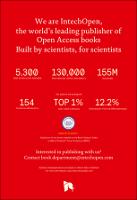Chapter Additive Manufacturing Applied to the Design of Small Satellite Structure for Space Debris Reduction
| dc.contributor.author | Caparrós, Andrés | |
| dc.contributor.author | Becedas, Jonathan | |
| dc.date.accessioned | 2021-06-02T10:11:33Z | |
| dc.date.available | 2021-06-02T10:11:33Z | |
| dc.date.issued | 2019 | |
| dc.identifier | ONIX_20210602_10.5772/intechopen.78762_407 | |
| dc.identifier.uri | https://library.oapen.org/handle/20.500.12657/49293 | |
| dc.description.abstract | Space debris has become a major aspect in the last few years. The vast amount of artificial objects orbiting the Earth is increasing. These objects are a threat for active and future missions. Besides, the possibility of uncontrolled re-entry of some of them reaching the surface of the Earth exists. The aim of this work is to provide a view on how to use additive manufacturing technology to design the next generation of satellites in order to reduce the space debris. The components that can be manufactured with additive manufacturing are identified, together with the technologies that are enabled by additive manufacturing to reduce space debris. Finally, the results of these studies and analysis are incorporated into the design of the structure of a small satellite. This study is being part of the H2020 European Project ReDSHIFT (Project ID 687500). | |
| dc.language | English | |
| dc.subject.classification | thema EDItEUR::T Technology, Engineering, Agriculture, Industrial processes::TB Technology: general issues::TBC Engineering: general | en_US |
| dc.subject.other | additive manufacturing, space debris, satellite structural design, ReDSHIFT H2020 project | |
| dc.subject.other | CubeSat, impacts mitigation | |
| dc.title | Chapter Additive Manufacturing Applied to the Design of Small Satellite Structure for Space Debris Reduction | |
| dc.type | chapter | |
| oapen.identifier.doi | 10.5772/intechopen.78762 | |
| oapen.relation.isPublishedBy | 09f6769d-48ed-467d-b150-4cf2680656a1 | |
| oapen.relation.isFundedBy | H2020-PROTEC-2015 | |
| oapen.grant.number | 687500 | |
| oapen.grant.acronym | ReDSHIFT |

